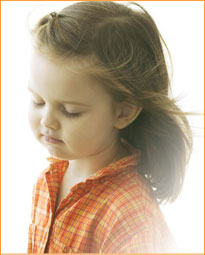Children's Health
 Acupuncture Helps Seriously Ill Children Cope with Pain
Acupuncture Helps Seriously Ill Children Cope with Pain
The National Institutes of Health acknowledges that acupuncture can be a useful treatment for some conditions and is gaining popularity to treat children who have chronic pain from conditions such as Inflammatory Bowel Disease, migraine headaches and endometriosis as well as nausea and vomiting associated with surgery or chemotherapy. Research from the Children's Hospital and Harvard Medical School (October, 2002), found that acupuncture incorporated into pediatric pain management practice reduced pain scores by over 5 points on a 10-point scale and improves overall well being. In addition, patients reported increased school attendance, improved sleep patterns and increased participation in extracurricular activities.
Acupuncture Effective for Bedwetting
Several significant research studies have shown that nocturnal enuresis (bed wetting) can be effectively treated with acupuncture. Researchers from Kyoto University of Medicine found that 6 out of the 15 (40%) improved immediately after treatment, and 7/15 (47%) 2 months after. Bladder capacities and number of wet nights per week were compared before and after treatment. Treatment was deemed effective where wet nights decreased by 50% or more compared with the baseline.
Common Childhood Maladies
Pediatric acupuncture may be accomplished without needles. Acupressure is a simple, painless treatment suitable for many childhood illnesses and is most useful for children from infancy through age 5, although older children up to age 12 also receive benefit from these non-invasive techniques.
When a small child is ill there are minute, almost imperceptible changes on the skin and the abdominal sounds are altered. These indicators guide the acupuncturist's hands. Gentle tapping and light stroking techniques are used for both assessing and treating the abdomen, back, head and the lower legs and arms of the child. The parent may hold the child while the short treatment is given. Children respond well to this delicate stimulation and their conditions can improve suddenly. The treatment is fast and often immediately effective.
